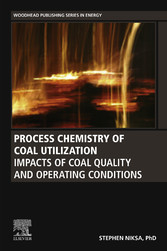Suche
Lesesoftware
Info / Kontakt
Process Chemistry of Coal Utilization - Impacts of Coal Quality and Operating Conditions
von: Stephen Niksa
Elsevier Reference Monographs, 2019
ISBN: 9780128187142 , 486 Seiten
Format: ePUB
Kopierschutz: DRM




Preis: 230,00 EUR
eBook anfordern 
Mehr zum Inhalt





